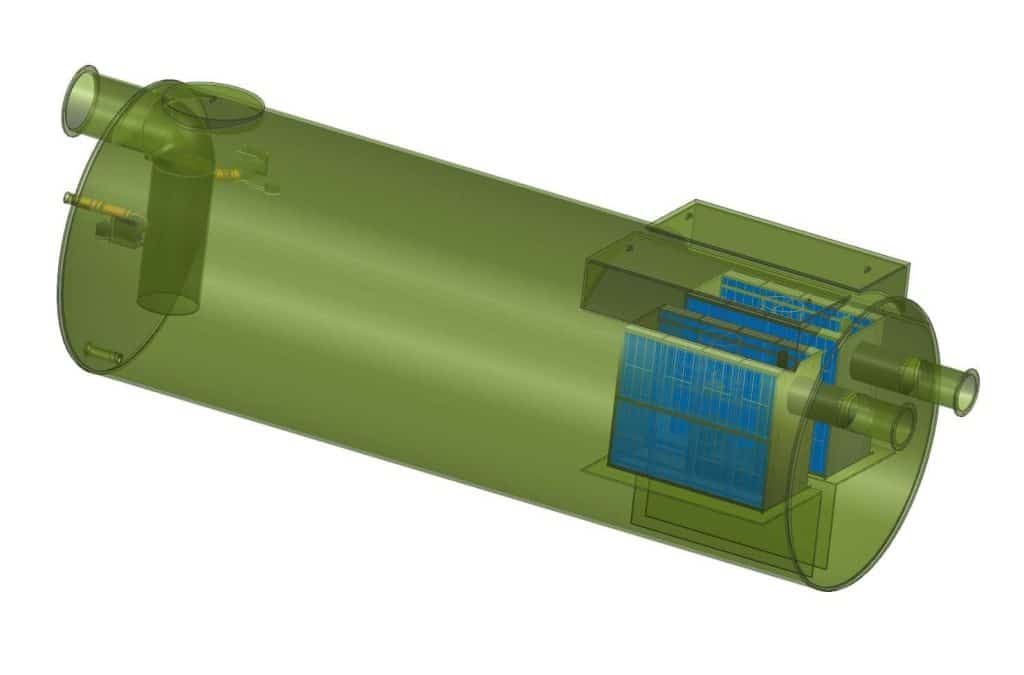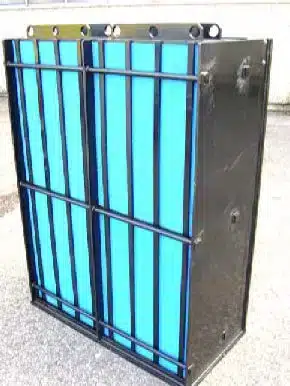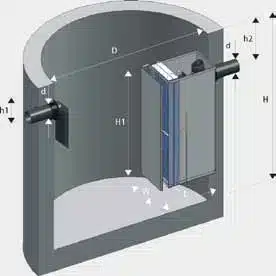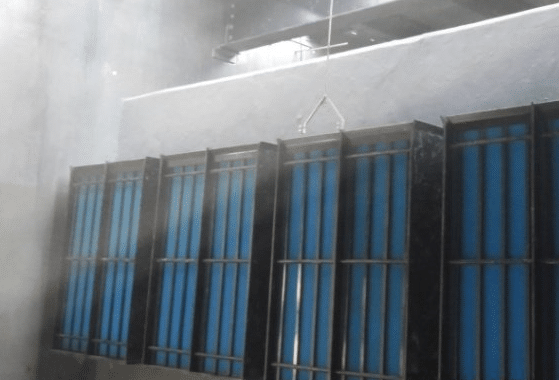In Alaska’s wild lands, a quiet protector works hard under the ground to keep our waterways safe. But how well do these hidden champions fight against pollution? Alaska’s Below Ground Oil Water Separators (OWS) are at the forefront of a new way to protect our environment. They use advanced engineering and save energy to solve a big environmental problem.
Freytech Inc. is leading the way with their advanced coalescing technology. This technology is changing how we separate oil and water. Their systems go beyond the usual standards, reaching an impressive 5 PPM separation efficiency. This is way better than the North American limit of 10 PPM. This breakthrough in Below Ground OWS technology means cleaner water and a healthier future for Alaska’s ecosystems.
Key Takeaways
- Alaska Below Ground OWS systems are key for protecting Alaska’s environment.
- Freytech Inc.’s technology beats North American discharge limits.
- Enhanced coalescing technology separates different types of hydrocarbons.
- Some OWS packages can get down to 0.1 PPM efficiency for emulsified oil.
- Below Ground OWS combines new engineering with saving energy.
Understanding Below Ground Oil Water Separators in Alaska
Below Ground Oil Water Separators are key in Alaska’s fight against environmental harm. They keep our water clean and help us live sustainably. In a state famous for its untouched nature, managing oily waste is key to fighting climate change and reducing our carbon footprint.
The Importance of OWS in Environmental Conservation
Oil Water Separators stop oil from polluting soil and groundwater. A big leak at the ADOT&PF Homer Maintenance Shop showed us how vital these systems are. They remove oil from wastewater, keeping Alaska’s ecosystems safe and supporting our conservation efforts.
Regulatory Compliance and Discharge Limits
Alaska has tough rules for handling oil-contaminated water. Below Ground Oil Water Separators help businesses follow these rules. They make sure the water released has no more than 10 parts per million (PPM) of oil. This is key for keeping Alaska’s water clean and supporting sustainable living.
Freytech Inc.’s Enhanced Coalescing Technology
Freytech Inc. has created a new coalescing technology for their Below Ground Oil Water Separators. This tech gets rid of oil at an amazing 5 PPM level, beating North American standards. It effectively removes different types of oil, helping Alaska fight climate change.
Alaska Below Ground OWS: Design and Functionality
Below ground oil water separators (OWS) in Alaska are designed for the tough climate. They use underground heating to stop freezing, making them work all year. These systems also use geothermal energy to keep up in extreme weather.
Key Components of Below Ground OWS Systems
Alaska’s below ground OWS systems have floor plate covers for easy access. These covers let workers check on the system without messing up the area. The tanks are made to handle pressure from the soil and groundwater, making them reliable for a long time.
Flow Rates and Capacity Considerations
OWS systems in Alaska vary in size to fit different needs. Smaller ones can handle 15 to 50 gallons per minute, and bigger ones up to 200 gallons. They are 9 to 11 feet long, 3 feet wide, and 7 to 8 feet high. This size ensures they work well for various uses.
Installation and Maintenance Requirements
Putting in below ground OWS systems in Alaska needs careful planning. The usual setup has a drain line 48 inches below the floor. But, specific sites might need different setups. Keeping these systems in good shape is key, especially in Alaska’s tough environment. Regular maintenance helps them keep protecting Alaska’s water.
Case Study: ADOT&PF Homer Maintenance Shop OWS
The ADOT&PF Homer Maintenance Shop oil water separator (OWS) case study shows how important OWS systems are for the environment. A big oil spill at the facility caused a lot of damage to the soil and groundwater. This shows we need new engineering ideas for OWS designs.
Over 700 gallons of used oil spilled, leading to a big cleanup. Workers took out 80 yards of dirty soil and cleaned 400 cubic yards with heat. This shows how important it is to be efficient with energy in cleaning up.
Even after cleaning, the area was still contaminated, showing the need for regular checks and updates on OWS systems. This case warns us of the dangers when OWS systems don’t work right or aren’t kept up.
This real-life example highlights the key role of new engineering in making strong OWS solutions. By using the latest technology and following strict upkeep rules, places can greatly lower the chance of harming the environment. This also helps avoid expensive cleanup costs.
Advantages of Below Ground OWS in Alaska’s Climate
Alaska Below Ground OWS systems are perfect for the tough Alaskan weather. They help with sustainable living and fighting climate change in the state.
Protection from Extreme Weather
Being underground keeps OWS systems safe from Alaska’s harsh weather. This means they work well all year, even in the cold winters. The steady underground temperature keeps the system efficient, which is good for the environment.
Space-Saving for Alaskan Facilities
Underground OWS systems make the most of Alaska’s limited land. They let buildings use the surface for other important things. This smart use of space fits well with sustainable living in both cities and towns in Alaska.
Cost-Effective Long-Term Solution
Below ground OWS systems last a long time, making them a smart choice for businesses in Alaska. They come with special protection that makes them last even longer. The LLS separator is great for small business owners, balancing rules with costs. This makes it easier to keep fighting climate change in Alaska.
These separators are crucial in storm water systems. They process runoff to meet the US EPA’s Clean Water Act standards. With effective oily water treatment, facilities protect the environment and dodge big fines.
Conclusion
Alaska Below Ground OWS systems are crucial for protecting the environment. Companies like Freytech Inc. create solutions that meet Alaska’s specific needs. These systems ensure top-quality oil-water separation, exceeding what laws require.
The ADOT&PF Homer Maintenance Shop shows how important these systems are. They stop pollution and cut down on cleanup costs. For Alaskan facilities, choosing the right Below Ground OWS is essential for nature protection and rule-following.
These systems also boost energy efficiency. They’re designed to work well in Alaska’s harsh weather while using less power. Investing in Below Ground OWS is a wise choice for businesses in Alaska. It helps protect the environment and saves money.










